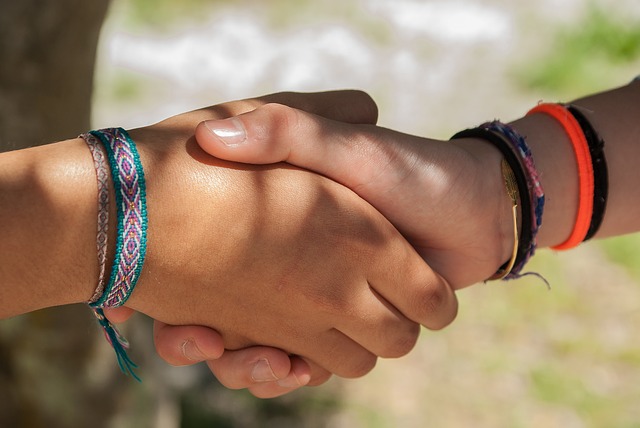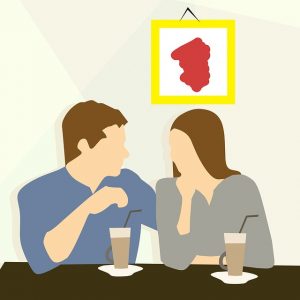Lesson 1: Hello..Hello!
This lesson, you will learn how to say a greeting, self-introduction in Thai for both casual and business occasions. Learn how and when Thai people do the "wai". The lesson comes with new vocabularies, conversation dialogs with useful phrases. Practice your pronunciation by listening to the audios and repeating. Review the lesson by doing the exercises provided.
New Words 1
The audio will pronounce the new words in Thai one by one. Try to repeat after me, take note of the syllables tone. Look at the english meaning and remember. Try to listen 2nd round without looking at the texts, repeat and think of the meaning.
1. Pöm ผม I, me (male speaker)
2. Chän ฉัน I, me(female speaker)
3. Khun คุณ you
Chêu ชื่อ name
Sà-wàt-dii สวัสดี hello
Khà/khá ค่ะ /คะ polite particle for female * Question sentence we use “Khá” (high tone)
Kráp ครับ polite particle for male
Chên-gan เช่นกัน same here
Yin-dii ยินดี happy/ to please
Rúu-jàk รู้จัก to know
Dâi ได้ to get, to receive, can
À-rai อะไร what

Conversations 1: Sa-wat-dii

Mali: sa-watdii kha. สวัสดี ค่ะ Hello.
John: sa-watdii krap สวัสดี ครับ Hello.
Mali: chán chêu Má-li. Khun chêu a-rai khá? ฉัน ชื่อ มะลิ คุณ ชื่อ อะไร คะ
My name is Mali. What is your name?
John: pôm chêu John kráp. Yin-dii tîi dâai rúu-jàk. ผม ชื่อ จอร์น ครับ ยินดี ที่ ได้ รู้ จัก
I’m John. Nice to meet you!
Mali: chên-gan khà เช่น กัน ค่ะ
Same here.
*** “khà” and “Kráp” are a polite particle. We use at the end of sentences to make the sentence more polite or softer, but no need to add in every sentence. Normally in a question sentence or short answer, we will end the sentence with the particle.
Culture Point:
Nickname: Most of Thai people have a nickname. Some people nickname is a part of their real name or can be totally different. For family, friends, co-worker or casual meeting normally we introduce ourselves and call each other by the nickname. For a formal introduction, we will use a real name followed by family name.
First and Family name: When introducing yourself in a formal way, Thais always start with the first name and follow by the family name. We also call people by their first name by put the word “khun” or the title then follow by the name. Ex. Khun Peter Sweet, Dr.Peter Sweet.
Exercise 1.1: Read and practice

Jantra: Sàwàtdii khà. Chán chêu Jantra Jandara khà. สวัสดี ค่ะ ฉัน ชื่อ จันทรา จันดารา ค่ะ
Khun chêu a-rai khá? คุณ ชื่อ อะไร คะ
Hello. My name is Jantra. What is your name?
Tony: Sawatdii kráp. Pöm chêu Tony Sweet kráp. สวัสดี ครับ ผม ชื่อ โทนี่ สวีท ครับ
Yin-dii tîi dâi rúu-jàk kráp ยินดี ที่ ได้ รู้จัก ครับ
Hello. My name is Tony Sweet. Nice to meet you.
Jantra: Chên-gan khà เช่นกันค่ะ
Same here.
**In a business meeting, Thai always introduce themselves with full name, starting with the first name and follow by family name. After that Thai call each other by the first name adding the word “Khun” in front of person name to show respect.

John Sàwàtdii kráp. Pöm chêu John kráp. สวัสดีครับ ผมชื่อจอห์นครับ
You: …………………………………………
John: Yin-dii tîi dâai rúu-jàk kháp Khun………………….
ยินดี ที่ ได้ รู้จัก ครับ คุณ……………..
You: ………………………………….
Exercise 1.2:
Match the Thai with the English
- khun a. name
- Pöm b. polite particle (F)
- chän c. you
- sà-wàt-dii d. I, me (male)
- chêu e. I, me (female)
- khà f. hello
- kráp g. polite particle (M)
- a-rai h. what
Exercise 1.3: Translate
- khun ………………….
- pöm ………………….
- chän ………………….
- sà-wàt-dii …………………..
- chêu ………………….
- khà ………………….
- kráp …………………
- rúu-jàk ………………..
Answers: 1. you 2. I (M) 3. I (F) 4. Hello 5. name 6. polite particle (F) 7. polite particle (M) 8. to know
New words 2

- sà-baai-dii สบายดี to be fine, to be well
2. mái ไหม yes/no question
3. sà-baai-dii mái สบายดีไหม how are you?
4. mâi ไม่ don’t/no
5. jer เจอ to meet
6. gan กัน together
7. naan นาน long time
8. Gâw ก็ also
9. Khòrp-khun ขอบคุณ thank you
10. là ล่ะ how about (you), what about (you)
Conversations 2: How Are You?

Kit: Sà-baai-dii mái kráp สบายดี ไหม ครับ
How are you?
Mali: Sà-baai-dii khà. Khun là khá สบายดี ค่ะ คุณ ละ คะ
I’m fine. How about you?
Kit: Pöm gâw sà-baai-dii kráp. Khorp-khun kráp. ผม ก็ สบายดี ครับ ขอบคุณ ครับ
I’m also good. Thank you!

Joe: Sà-wàt-dii kràp khun Pat, mâi jer gan naan, sà-baai-dii mái kráp สวัสดี ครับ คุณ พัช ไม่ เจอ กัน นาน สบายดี ไหม ครับ
Hello Pat! Long time no see. How are you?
Pat: Sà-wàt-dii khà khun Joe, Chàn sà-baai-dii khà, khun là khá สวัสดี ค่ะ คุณ โจ ฉัน สบายดี ค่ะ คุณ ล่ะ คะ
Hello Joe. I’m great! How about you?
Joe: Pöm gâw sà-baai-dii kráp. Khorp-khun kráp. ผม ก็ สบายดี ครับ ขอบคุณ ครับ
I’m also well. Thank you!
Exercise 2.1
Say it in Thai
hello ………………………
My name is .. …………………………
What is your name? ………………..
How are you? …………………….
I’m also fine. ………………………..
Thank you. …………………..
Nice to meet you. ………………….
Long time no see. ……………….
Check your Answer here:
Exercise 2.2:
Fill the blanks.
- Sà-wàt-dii khà, chán ……….. Jai khà. Hello, my name is Jai.
- Khun chêu …………….. kráp? What is your name?
- Khun sà-baai-dii …………… khá? How are you?
- yin-dii tîi dâai ………….. Nice to meet you.
Check your Answer here:

Culture Point:
“Wai” is both hands put together in between your chest. "Wai" always comes with words used for greeting, saying farewell, thanking, and apologizing. “Wai” is a method of showing respect. We don't 'Wai' to everyone. Thai people pay respect to someone who is older or as senior that we respect. As a foreigner "wai" to important people, senior in working places and Thai family. If someone "wai" you first, then received their "wai” just by "wai" them back.
Thai Basic Conversations will open the gate for you to Thailand!
- Home
- About
- Let’s Chat
- Let’s Write
- Writing Lesson Plan
- Middle Class Consonants
- Long Vowel
- More Long Vowel
- More Long Vowel
- More Long Vowel
- More Long Vowel
- Tone Mark
- Tone Mark อ่
- Tone Mark อ้
- Tone Mark อ๊ & อ๋
- Short Vowel
- More Short Vowel
- More Short Vowel
- More Short Vowel
- Dead & Live Syllable
- Final Consonants
- Sonorant Final ง
- Sonorant Final น
- Sonorant Final ม
- Sonorant Final ย
- Sonorant Final ว
- Stop Final ก
- Stop Final ด
- Stop Final บ
- Seven Vowel that Change Form
- High Class Consonants
- Low Class Consonant (Paired)
- Low Class Consonant (Unpaired)
- Special อ
- Silent ห
- Blog
- Contact
- Log In
